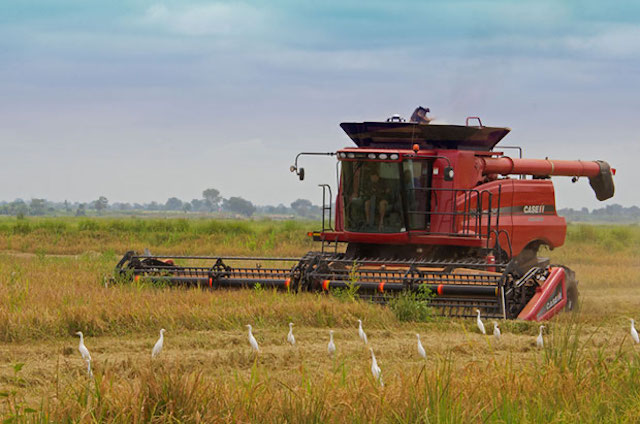How Access to Long-Established Technology Can Help Feed Growing Cities
The Propcom Mai-Karfi program in Nigeria is helping to increase access to tractors, which will aid farmers in increasing their yields.
Editor’s Note: This article was originally published on the Chicago Council on Global Affairs blog.

The first gasoline-powered tractor rolled down a Midwestern wheat field in 1892. Since then, this technology has evolved and spread around the world—but it has spread unevenly. While globally there are 196 tractors for every 100 square kilometers of arable land, that number is just 6.6 in Nigeria.
The rising cost of agricultural labor, driven in part by rural-to-urban migration, has represented a significant expense for smallholder farmers who must hire day laborers to manually prepare their fields. If farmers hired a tractor to do that work instead, they could use the money they save to invest in their farms and improve their yields; but with few providers offering tractor services in the country, most Nigerian smallholders do not have that option.
An Obstacle to Growth
These kinds of problems are common for farmers in developing countries. Farmers in high-income countries, for example, use nearly ten times more fertilizer per acre as those in low-income countries do. That is part of the reason why there is a wide gap in farm productivity between low-income and high-income countries: farmers in the 54 Low-Income, Food-Deficit Countries (LIFDCs), for example, harvest cereal yields just one-third the size of those of their counterparts in the United States.
With better access to well-established technologies, farmers in developing countries could boost their yields, earn higher incomes, and increase the supply of food available to the world’s growing cities. How can that access be improved?
As shown in Nigeria by the Propcom Mai-Karfi program, an initiative funded by the United Kingdom’s Department for International Development and implemented by a consortium of organizations led by Palladium and including TechnoServe, the answer can often lie in supporting private sector investment and commercial relationships that get technology onto smallholders’ farms.
Getting More Tractors Where They’re Needed
In Nigeria, the public sector had subsidized a limited number of private tractor purchases and owned a small number of tractors for use on farmers’ fields. But supply fell far short of demand: there were just 20,000 tractors in a country that needed at least 70,000 (and potentially as many as 300,000) tractors. Because spare parts and maintenance were not properly budgeted for, only about half of the machines were working. Under this model, private tractor owners could not get the equipment they needed to expand their fleets, and smallholder farmers could not receive the ploughing services that they needed to run their farms more efficiently.
The Propcom Mai-Karfi program staff works with tractor distributors, lenders, and various national tractor owner associations to forge new linkages and support a sustainable commercial model in which tractor owners provide farmers with ploughing services for a small fee. The project helps the tractor distributors to improve their sales and marketing channels to reach private-sector buyers, and the distributors have decentralized their operations in order to better serve their customers. The project also works with banks to create credit products that would enable the purchase of tractors; in order to reduce the risk to banks and stimulate private sector financing, the program has provided various types of financing guarantees. To improve the quality of services provided to smallholders and ensure that the provision of those services would be profitable for the tractor operators, the project has helped the tractor operators’ association to develop specialized training on mechanized agriculture.
The project is still on-going, with aims to scale. But in 2014 and 2015, it led to the distribution of approximately 94 tractors. Since a tractor can reach approximately 300 smallholder farmers each year, with an estimated annual cost saving of $50 in land preparation cost, each tractor is generating $15,000 of annual incremental income for farmers in the community. Because the model is built on profitable commercial relationships between farmers, tractor operators, distributors and lenders, the progress observed so far should be sustained and even grow.
Approaches like this, which harness private investment in the agricultural sector, are crucial for getting new and long-established technology into the hands of those who have been left behind. Ultimately, this will be vital for feeding the world’s growing population.



